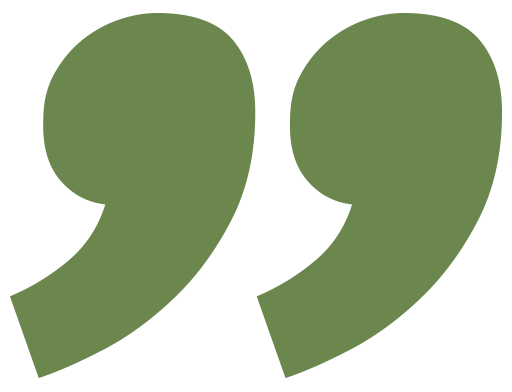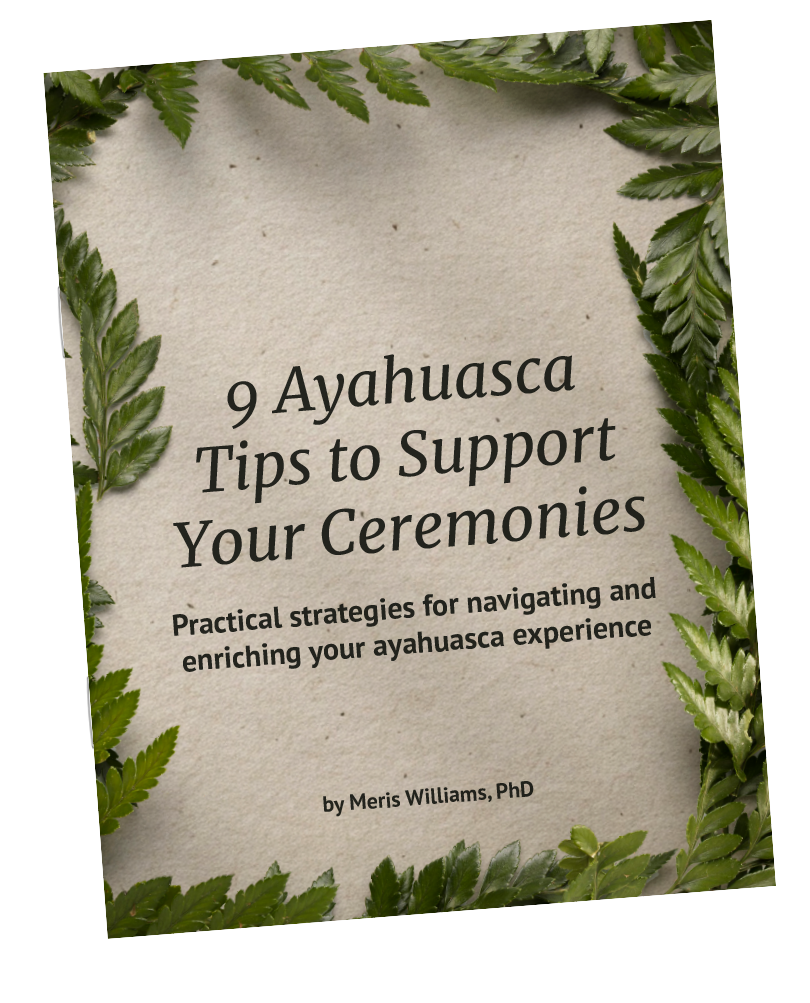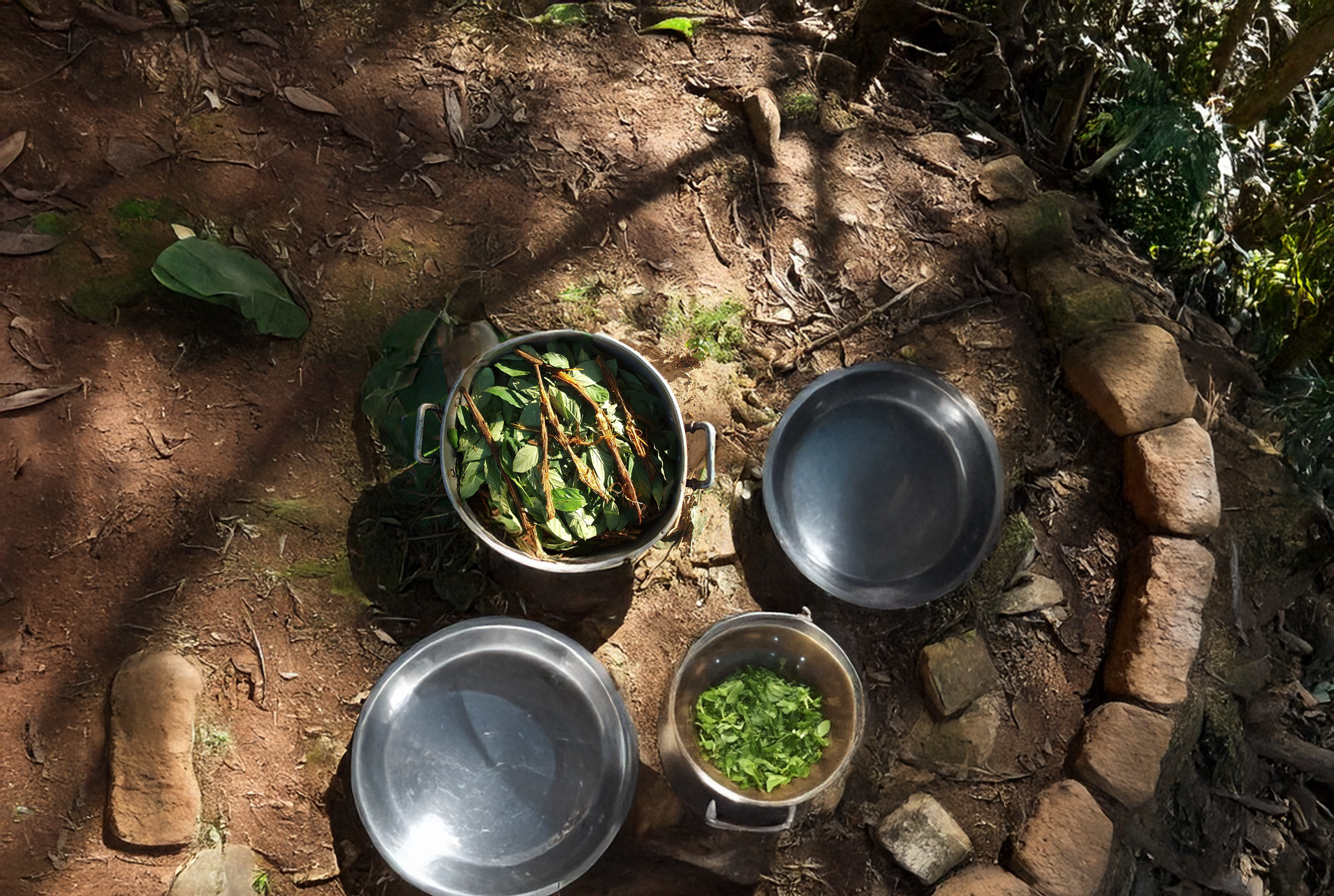What is Ayahuasca?
A brief overview bridging Indigenous and Western perspectives
How is ayahuasca made?
Prepared with knowledge, expertise, and patience
Ayahuasca is made by pounding the stems of the ayahuasca vine (Banisteriopsis caapi) and boiling them for several hours with (usually) the leaves of the chacruna plant (Psychotria viridis) into a reduction. In some cases, other plants containing monoamine oxidase inhibitors (MAOIs) are used instead of chacruna. The final preparation – known as ayahuasca – among its many names, including caapi, yajé, daime, vegetal, and oni – contains both the B caapi vine and chacruna plant.
What ayahuasca “is”: A deeper dive
Indigenous and Western perspectives
Exploring what ayahuasca “is” beyond its physical components reveals a complex topic that can be viewed from different perspectives.
The first perspective encompasses the original knowledges of ayahuasca that Indigenous peoples have stewarded for generations, which hold deep understandings of health, healing, and the interconnection of all life. These knowledges and associated practices are very much alive today in more than 160 ayahuasca-using communities in the Global South.
A second, newly-developing perspective comes from research undertaken by Western scientific communities examining ayahuasca’s potential as a mental health intervention. The effects of ayahuasca on depression, anxiety, substance use, suicide, and eating disorders are being investigated, with promising early results.
Both of these knowledge systems can be recognized in their own right – each with their own internally consistent logics and ways of knowing – without using one to validate the other. Dr. Robin Wall Kimmerer, Native American botanist, author, and professor of environmental and forest biology highlights that each perspective brings something useful to the table:
“I think of Indigenous knowledge and Western science both as powerful intellectual traditions, which grow from different worldviews, but can both illuminate the nature of the living world and how we might better care for it. They are distinctive, sovereign systems of knowledge which can complement one another” (in Aschaiek, 2021).
Below is a sampling of the knowledges held by these respective communities. Generally speaking, Indigenous understandings and applications of ayahuasca tend to be multifaceted, whereas the Western perspective focuses on mental health applications. (Although concepts are grouped for clarity, Indigenous knowledges of ayahuasca are diverse and not a single, unified perspective.)
Indigenous knowledges
Ayahuasca is:
-
A Quechua term meaning “vine of the dead” or “vine of the soul,” though it’s also called caapi, yajé, daime, vegetal, oni, and more, depending on the community.
-
A reduction of the ayahuasca vine (which has many varieties) and typically the leaves of the chacruna plant.
-
A portal, a delicate tool for reaching the spirit world
-
An entity
-
Spirits in a liquid form
-
A teacher
-
An ethnomedical practice
-
A plurality
Western knowledges
Ayahuasca is:
-
A substance
-
A decoction of the ayahuasca vine (Banisteriopsis caapi) and typically the leaves of the chacruna plant (Psychotria viridis)
-
An hallucinogen
-
A pharmacotherapy, sometimes with adjunctive psychotherapy
What is ayahuasca used for?
Indigenous and Western applications
Ayahuasca has served multiple purposes in Indigenous and Mestizo communities (use characterized by multiplicity) versus the proposed applications from a Western perspective (use focused on mental health).
Indigenous knowledges
Ayahuasca has been or is used for:
-
Aiding hunting
-
Divination
-
Communicating across distances
-
A diagnostic tool for illnesses
-
Medicine (in the original practices, only the practitioner drank the ayahuasca, not the patient)
-
Art
-
Sorcery and counter-sorcery
-
Recreation
Western knowledges
Ayahuasca may have potential applications for:
-
Anxiety
-
Depression
-
Suicidality
-
Substance use disorders
-
Eating disorders
How does ayahuasca work?
Perspectives on mechanisms of action
Again, the viewpoints are really different! The Indigenous understandings I’m most familiar with see the practitioner’s healing ability – enacted through their healing songs and relationships with plants – as an energetic bridge between the physical and spirit worlds. In contrast, Western perspectives highlight complex biological variables, while also considering the importance of “set” (mindset of the person drinking the ayahuasca) and “setting” (the context in which it’s consumed).
Post-tourism Indigenous knowledges
How ayahuasca works is by:
-
Giving the ayahuasca practitioner the ability to communicate with the spirit world
-
Facilitating the practitioner’s ability to see and diagnose the causes of illness, misfortune, or concern in the patient
-
Acting as a guide, alongside the practitioner, through a healing process in which the patient is an active agent and the plant spirits are the doctors.
Effectiveness is attributed to the healer’s power, knowledge, and experience.
Western knowledges
How ayahuasca works is by:
-
Permitting the psychoactive compound N,N-Dimethyltryptamine (DMT) in the chacruna leaves to pass through the digestive tract and reach the brain unmetabolized (this is achieved through the addition of the monoamine oxidase inhibitors [MAOIs] present in the ayahuasca vine)
-
Activating, via the DMT, serotonergic pathways in the brain through the 5HT-2A receptors
-
Additionally activating serotonergic pathways with the beta-carbolines present in the ayahuasca vine
-
Disrupting the brain’s usual neural hierarchies by reducing higher order cognitive control and promoting the bottom-up flow of information
-
Facilitating somatic, introspective, and emotion-processing experiences as well as self- and spiritual connection and new insights and perspectives.
Effectiveness is attributed to the substance-as-ingested in people for whom ayahuasca is appropriate, in a safe and supportive setting.
Summary
This brief overview has highlighted two prevailing perspectives that may be complementary and contribute to an evolving understanding of ayahuasca. It’s important to emphasize that Indigenous practitioners currently hold the deepest, most established understandings of ayahuasca while Western research is still in its early stages.
Exploring the diverse personal accounts of ayahuasca journeys can also offer insights into what ayahuasca is, what people use it for, and how it works for each person.
Visit my Resources page for external links to some credible ayahuasca-related resources.

When you regain a sense of your life as a journey of discovery,
you return to rhythm with yourself.
~ John O’Donohue

Free eBook to support your ceremonies
Subscribe to my free monthly newsletter, and receive my eBook: 9 Ayahuasca Tips to Support Your Ceremonies.
